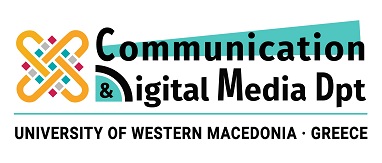CDM 2144 PRINCIPLES VIDEO AND AUDIO EDITING
LEVEL OF STUDY: UNDERGRADUATE
COURSE UNIT CODE: CDM 2144
SEMESTER: 2nd
COURSE TITLE: PRINCIPLES VIDEO AND AUDIO EDITING
TEACHING WEEKLY HOURS: 2 H/W LECTURES and 2 H/W LAB EXERCISES
ECTS: 4
COURSE TYPE: CORE COMPULSORY
TEACHING AND EXAM LANGUAGE: GREEK
COURSE DELIVERY TO ERASMUS STUDENTS: YES (in English through project work)
The aim of the course is to cover the theory and important developments related to digital video and its use in areas of communication such as information, marketing, education etc. Students will also be taught the role of video in modern media such as online services, social networks, digital storytelling, interactive media, etc.
The course focuses on the transition from analogue to digital video, on video camera types and technical details on how to operate digital video cameras, auxiliary equipment (tripods, drones, lens types, lighting, green screen etc.), video shooting techniques (framing) , types of shots, etc., video file types and their characteristics (format, dimensions, size calculation, etc.), tools used today in video editing.
The course will also cover relevant topics related to sound such as the transition from analogue to digital audio, digital audio processing (equipment, sampling & quantization), audio files and their features.
The course will also cover the stages of video production (pre-production, post-production), topics related to the evolution of the Internet and the impact of online technologies on the way video is used and disseminated today (video sharing platforms, YouTube, Vimeo and social networks). The course will also cover topics related to the use of video in education, distance learning and massive open online learning platforms (MOOCS).
The course will also cover current trends in video production such as 360o video, 3D video, interactive video and more.
Particular emphasis will be given to performing laboratory exercises on video editing techniques using appropriate software packages (commercial and open source).
Upon successful completion of the course the students will be able to:
- Analyze the social implications and role of digital video in areas of communication such as journalism, marketing, communication and education.
- Understand how digital cameras work, the camera equipment (camera types and accessories), basic shooting techniques as well as to apply the basic principles of video shooting and editing to achieve communication goals.
- Acquire basic knowledge about video file features such as format, frame rates (FPS), NTSC & PAL, frame dimensions, file size calculation, video file types and compression techniques, codecs etc.
- Acquire basic knowledge of digital audio and audio file features (file types, sampling & quantization)
- To analyze the capabilities of video & sound editing software and evaluate video editing software packages
- Apply video editing techniques and special effects to create presentation videos for communication purposes
- Analyze the role and forms of video in the evolving web environment, in social networks and modern multimedia applications (YouTube video sharing platforms, Vimeo, snapchat, stories, Augmented and Virtual reality)
- To analyze and use various techniques for disseminating video through various web platforms and applications
- To analyze and evaluate emerging video technologies (360o video, interactive video, 3D video, etc.)
